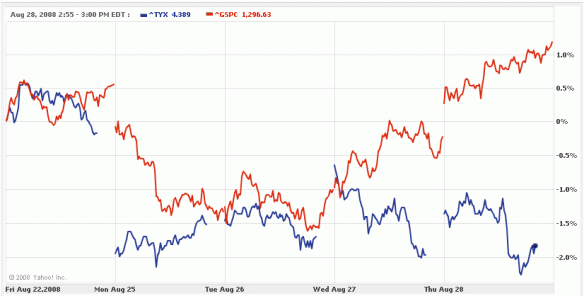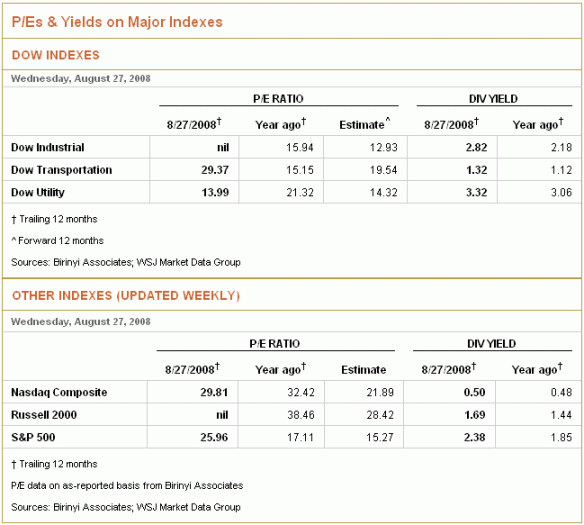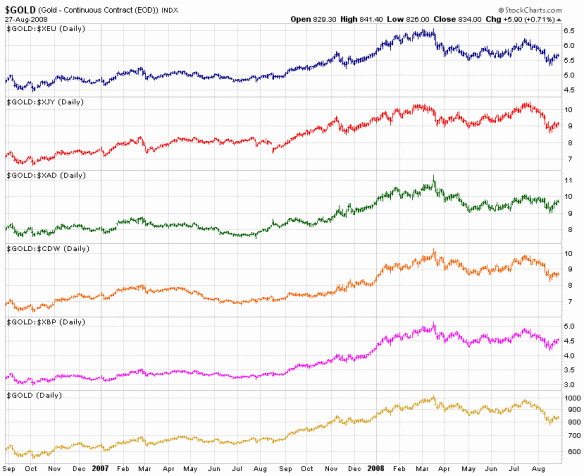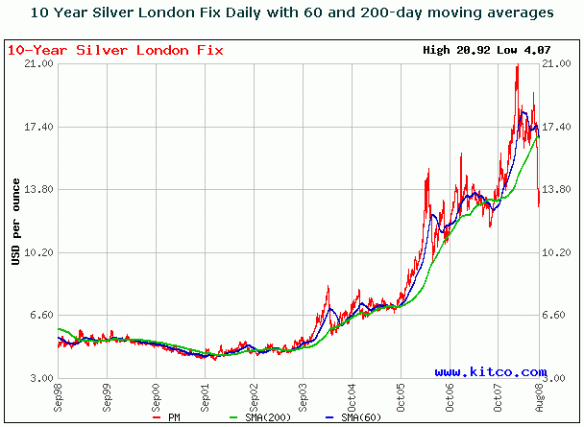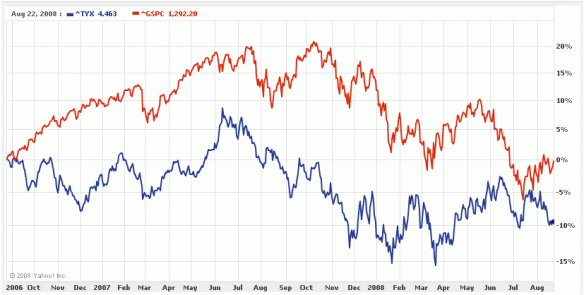Ron Paul is not just the lone voice of reason and honesty in Congress, he’s also a great writer. In the latest of his weekly essays, he spells out how sound money (gold and silver being tried and true examples of which) restrains governments from engaging in mischief such as wars of aggression:
“Can sound money really bring about peace? Actually, it plays a big part in peaceful international relationships. Money based on commodities, rather than paper, is not subject to government manipulation, and is a key component to free and honest trade. History shows that if countries engage in trade with each other, their governments tend to find ways to get along for the same reason you do not kill your customers at your place of business, even if they occasionally annoy you. If someone outright cheats you, however, you may engage in “war” by taking them to court, for example, and the relationship will sour. Governments and central banks with unfettered power to manipulate currency also have the ability to cheat their creditors. One way they do this is to simply create enough currency to pay off debts. This devalues the currency and “cheats” the recipient out of what they are owed. It would not be fair if you watered down your product the way our government waters down its currency, so it is not hard to understand, in these simplified terms, why loose monetary policy contributes so much to ill will and war around the world.
Can sound money really bring about peace? Actually, it plays a big part in peaceful international relationships. Money based on commodities, rather than paper, is not subject to government manipulation, and is a key component to free and honest trade. History shows that if countries engage in trade with each other, their governments tend to find ways to get along for the same reason you do not kill your customers at your place of business, even if they occasionally annoy you. If someone outright cheats you, however, you may engage in “war” by taking them to court, for example, and the relationship will sour. Governments and central banks with unfettered power to manipulate currency also have the ability to cheat their creditors. One way they do this is to simply create enough currency to pay off debts. This devalues the currency and “cheats” the recipient out of what they are owed. It would not be fair if you watered down your product the way our government waters down its currency, so it is not hard to understand, in these simplified terms, why loose monetary policy contributes so much to ill will and war around the world.
Sound money, on the other hand, simply is what it is. Removing governmental power to manipulate money, removes the temptation for government to spend, print and cheat. Sound money ensures that our government’s spending priorities would be brought into sharp focus and reduced to only what we can afford.
Sound money also limits the ability to wage wars of aggression. Imagine how much more careful Washington would have to be about starting a war if they did not have this financial sleight of hand at their disposal! Fiat currency allows government do expensive things they should not be doing while paying the bills with cheap money”.
It’s no secret that deficits and inflation are how wars are financed. Every major war fought by the US, even the Revolution, was funded by printing currency and/or selling bonds (often at great profit to bankers selling the bonds). Whenever the US had been on a gold standard before a major war, it would be dropped, as in the Civil War and WWI. All combatants in WWI dropped gold upon entering, and they again dropped it permanently by WWII. To be fair, many also ran huge deficits to pay for socialism in the 1930s, the national socialist (Nationalsozialistische, i.e. NAZI) kind and otherwise.
Vietnam, along with Lyndon Johnson’s ‘Great Society’ welfare expansion, was an immediate cause of the final severance of the dollar to gold and silver, first with the withdrawal of silver coinage in 1964, then with the default on our gold-backed bonds in 1971.
Many know that after Rome’s wars stopped paying for themselves and the welfare state got out of hand, inflation kept the game going. The silver Denarius of Augustus’s reign was slowly diluted to nearly 100% copper over the following 200 years. When merchants resisted the debased coinage, Emperors resorted to brute force to give value to their fiat money: use it, or else.


